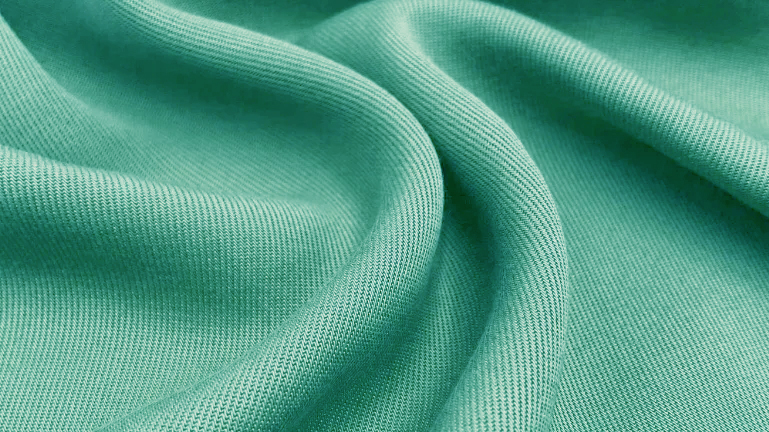
1.Classified by processing technology
Regenerated fiber is made of natural fibers (cotton linters, wood, bamboo, hemp, bagasse, reed, etc.) through a certain chemical process and spinning to reshape the cellulose molecules, also known as man-made fibers. Because the chemical composition and chemical structure remain unchanged during the processing, manufacturing and spinning of natural materials, it is also called regenerated fiber.
From the requirements of the processing process and regression degradation environmental protection trend, it can be divided into non-environmental protection (cotton/wood pulp indirect dissolution method) and environmental protection process (cotton/wood pulp direct dissolution method). The non-environmental protection process (such as the traditional viscose Rayon) is to sulfonate the alkali-treated cotton/wood pulp with carbon disulfide and alkali cellulose to make a spinning stock solution, and finally use wet spinning to regenerate It is made of cellulose coagulation.
Environmental protection technology (such as lyocell) uses N-methylmorpholine oxide (NMMO) aqueous solution as a solvent to directly dissolve cellulose pulp into the spinning solution, and then process it by wet spinning or dry-wet spinning made. Compared with the production method of ordinary viscose fiber, the biggest advantage is that NMMO can directly dissolve cellulose pulp, the production process of spinning dope can be greatly simplified, the solution recovery rate can reach more than 99%, and the production process hardly pollutes the environment. The production processes of Tencel®, Richel®, Gracell®, Yingcell®, bamboo fiber, and Macelle are all environmentally friendly processes.
2.Classification by main physical characteristics
Key indicators such as modulus, strength, and crystallinity (especially under wet conditions) are important factors that affect fabric slipperiness, moisture permeability, and drape. For example, ordinary viscose has excellent hygroscopicity and easy dyeing property, but its modulus and strength are low, especially the wet strength is low. Modal fiber improves the above-mentioned shortcomings of viscose fiber, and also has high strength and modulus in the wet state, so it is often called high wet modulus viscose fiber. The structure of Modal and the degree of polymerization of cellulose in the molecule are higher than that of ordinary viscose fiber and lower than that of Lyocell. The fabric is smooth, the surface of the fabric is bright and shiny, and the drapability is better than that of existing cotton, polyester, and rayon. It has a silk-like luster and feel, and is a natural mercerized fabric.
3.Rules of Trade Names for Regenerated Fibers
The green and environmentally friendly high-humidity modulus regenerated cellulose products developed in my country follow certain rules in terms of commodity names. In order to facilitate international trade, they usually have Chinese names (or Chinese pinyin) and English names. There are two main categories of new green viscose fiber product names:
One is Modal (Modal). It may be a coincidence that the English "Mo" has the same pronunciation as the Chinese "wood", so the merchants use this to advertise "Modal" to emphasize that the fiber uses natural wood as raw material, which is actually "Modal". Foreign countries mainly use high-quality wood pulp, and "Dyer" is the transliteration of the letters behind the English language. Based on this, any fiber with "Dyer" in the products of our country's synthetic fiber manufacturing companies belongs to this type of product, which is called China Modal. : Such as Newdal (Newdal strong viscose fiber), Sadal (Sadal), Bamboodale, Thincell, etc.
Second, the expressions of Lyocell (Leocell) and Tencel® (Tencel) are more accurate. The Chinese name of the Lyocell (lyocell) fiber registered in my country by the British Acordis company is "Tencel®". In 1989, the name of Lyocell (Lyocell) fiber was named by BISFA (International Man-made Fiber and Synthetic Fiber Standards Bureau), and the regenerated cellulose fiber was named Lyocell. "Lyo" comes from the Greek word "Lyein", which means to dissolve, " "cell" is taken from cellulose "Cellulose", the two together are "Lyocell", and the Chinese homonym is called Lyocell. Foreigners have a good understanding of Chinese culture when choosing a product name. Lyocell, its product name is Tencel® or "Tencel®".
Post time: Dec-30-2022
